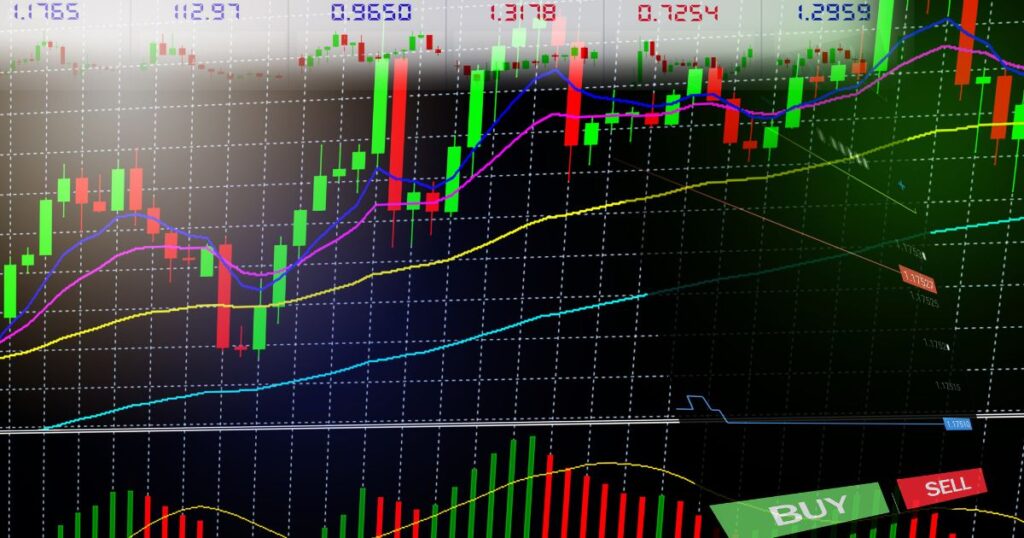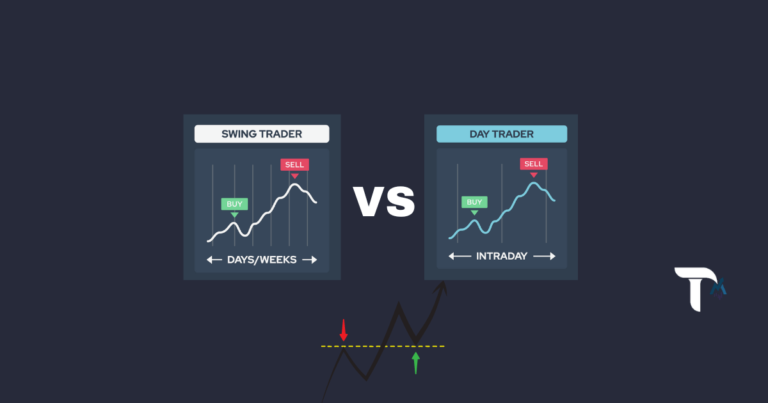How to trade Forex in a Bull Market? Strategies and Tips
A bull market is a euphoric phase in the financial markets where prices consistently rise, driven by high investor confidence and optimism about the future. Trading Forex during a bull market can be highly profitable. Still, it requires a strategic approach and a keen understanding of market dynamics. How to trade Forex in a Bull Market?
This comprehensive guide will delve deeper into the strategies and tips you need to navigate and succeed in a bull market.
- Don’t be afraid to take profits. It is important to take profits when you are up, even if you think the market will continue to rise.
- Be patient. Don’t expect to make a lot of money overnight. It takes time and effort to become a successful Forex trader.
- Learn from your mistakes. Everyone makes mistakes when they are learning. The important thing is to learn from your mistakes and not make them again.
How to trade Forex in a Bull Market?
What is a Bull Market?
A bull market is a market condition in which prices are generally rising. It is characterized by optimism and increased investor confidence. Bull markets typically last for several months or even years.

The term “bull” comes from how a bull attacks with its horns pointing upwards. In contrast, a bear market is characterized by falling prices and pessimism. The term “bear” comes from how a bear attacks with its claws pointing downwards.
Many factors can contribute to a bull market, including:
- Strong economic growth
- Low interest rates
- Increased corporate profits
- Optimism about the future
Bull markets can be a great time to invest, as prices are generally rising, and there is a higher likelihood of making a profit. However, it is essential to remember that bull markets do not last forever, and there will always be periods of volatility.
Here are some of the signs that a bull market may be underway:
- Increased investor confidence
- Rising stock prices
- Increased trading volume
- Positive economic news
- Rising corporate profits
Suppose you are considering investing in a bull market. In that case, it is essential to research and understand the risks involved. It would help if you also had a long-term investment horizon, as bull markets can take time to mature.
Here are some of the risks associated with investing in a bull market:
- Market volatility: Bull markets can be volatile, and prices can quickly fall.
- Overvaluation: If prices get too high, the market may be overvalued and be due for a correction.
- Greed: Bulls can be greedy, and investors may be willing to take on more risk than they should.
Managing these risks by diversifying your portfolio and using stop-loss orders is essential. It would help if you also were prepared to take profits when the market is doing well.
Understanding Your Goals and Trading Style
Before jumping into the Forex market, defining your goals and trading style is essential. Understanding your objectives will help you tailor your approach to suit your needs:
Setting Clear Objectives
- Short-term Profits: Focus on day trading or scalping strategies to capitalize on short-term price fluctuations.
- Long-term Growth: Those interested in building wealth over time should consider position trading or swing trading, which involves holding positions for longer durations.
Selecting the Right Trading Style
- Day Trading: Involves making multiple trades within a single day to profit from short-term price movements.
- Swing Trading: Focuses on capturing medium-term price swings, holding positions for days or weeks.
- Position Trading: A long-term approach where traders hold positions for weeks, months, or even years based on fundamental analysis.
Choosing a Reputable Broker and Trading Platform
The right broker and trading platform is crucial for a successful Forex journey. Here are some considerations:
Broker Selection
- Regulation: Choose a broker regulated by reputable authorities to ensure a secure trading environment.
- Spreads and Fees: Evaluate the broker’s spreads, commissions, and other fees to minimize trading costs.
- Customer Support: Access to responsive customer support is vital for addressing issues promptly.
Trading Platform
- User-Friendly Interface: Opt for a platform that you find intuitive and easy to navigate.
- Analytical Tools: Look for a platform that offers a wide range of technical and fundamental analysis tools.
- Execution Speed: A fast and reliable execution of orders is crucial, especially in volatile markets.
Developing a Consistent Trading Methodology
Consistency is vital to success in Forex trading. Establish a transparent trading methodology that includes entry and exit strategies as well as risk management techniques:
Critical Elements of a Trading Methodology
- Entry and Exit Rules: Define specific criteria for entering and exiting trades, such as technical indicators or price patterns.
- Risk Management: Determine the maximum percentage of your trading capital you are willing to risk on a single trade. Always use stop-loss orders to limit potential losses.
- Position Sizing: Calculate the appropriate position size for each trade based on your risk tolerance and account size.
Practicing Effective Risk Management
In a bull market, becoming overconfident and overlooking risk management is easy. However, prudent risk management is crucial for long-term success:
Risk Management Best Practices
- Set Stop-Loss Orders: Always use stop-loss orders to limit potential losses on each trade.
- Risk-Reward Ratio: Aim for a favorable risk-reward ratio, where potential profits outweigh potential losses.
- Diversify Your Portfolio: Avoid putting all your capital into a single trade or currency pair. Diversification can help spread risk.
Staying Disciplined and Avoiding Emotional Trading
Emotions can cloud judgment, leading to impulsive decisions. Maintain discipline by adhering to your trading plan:
Emotion Management
- Stick to Your Plan: Follow your predefined trading strategy without deviating due to fear or greed.
- Take Breaks: Avoid excessive screen time to prevent emotional exhaustion.
- Journaling: Keep a trading journal to track your decisions and emotions. Reviewing past trades can help you learn from mistakes.
Identifying a Bull Market
Recognizing a bull market is crucial before employing your trading strategies. Here are indicators of a bull market:
Bull Market Signals
- Rising Prices: Consistent upward movement in asset prices over an extended period.
- Positive Economic Data: Favorable economic indicators include GDP growth, employment figures, and low interest rates.
- Optimistic News Headlines: Positive news regarding the economy, corporate earnings, or market sentiment.
- Increased Trading Volume: Higher trading volumes often accompany bull markets.
Strategies for Trading in a Bull Market
Now that you can identify a bull market let’s explore strategies tailored to this market condition:
Trend Following

- Strategy: Identify the prevailing trend (bullish) and trade in the direction of that trend.
- Indicators: Use trend-following indicators like moving averages or trendlines.
Support and Resistance Trading

- Strategy: Identify key support levels where prices tend to find buying interest and resistance levels where they encounter selling pressure.
- Indicators: Utilize support and resistance levels, along with candlestick patterns, to make trading decisions.
Momentum Trading
- Strategy: Capitalize on the momentum of a strong bull market by entering trades when momentum is high.
- Indicators: Use momentum indicators like the Relative Strength Index (RSI) or Moving Average Convergence Divergence (MACD).
Range Trading

- Strategy: Trade within a specific price range, exploiting fluctuations within defined boundaries.
- Indicators: Bollinger Bands, pivot points, and stochastic oscillators can assist in identifying range-bound markets.
Which Strategy Is Right for You?
The choice of strategy depends on your trading style, risk tolerance, and experience level:
- Beginners: Start with a simple strategy like trend following and gradually expand your repertoire as you gain experience.
- Intermediate Traders: Experiment with various strategies to find one that aligns with your strengths and preferences.
- Advanced Traders: Tailor your strategy based on the specific market conditions and your expertise.
Conclusion
How to trade Forex in a Bull Market? In a bull market, trading Forex can be a lucrative endeavor. However, remember that market trends are not perpetual, and a bear market may follow. To increase your chances of success, adhere to your trading plan, practice effective risk management, and continuously refine your skills. Additionally, don’t forget to take profits when they are available, be patient in your trading journey, and learn from your mistakes. By following these strategies and tips, you can navigate the complexities of Forex trading during a bull market and aim for consistent profitability.







